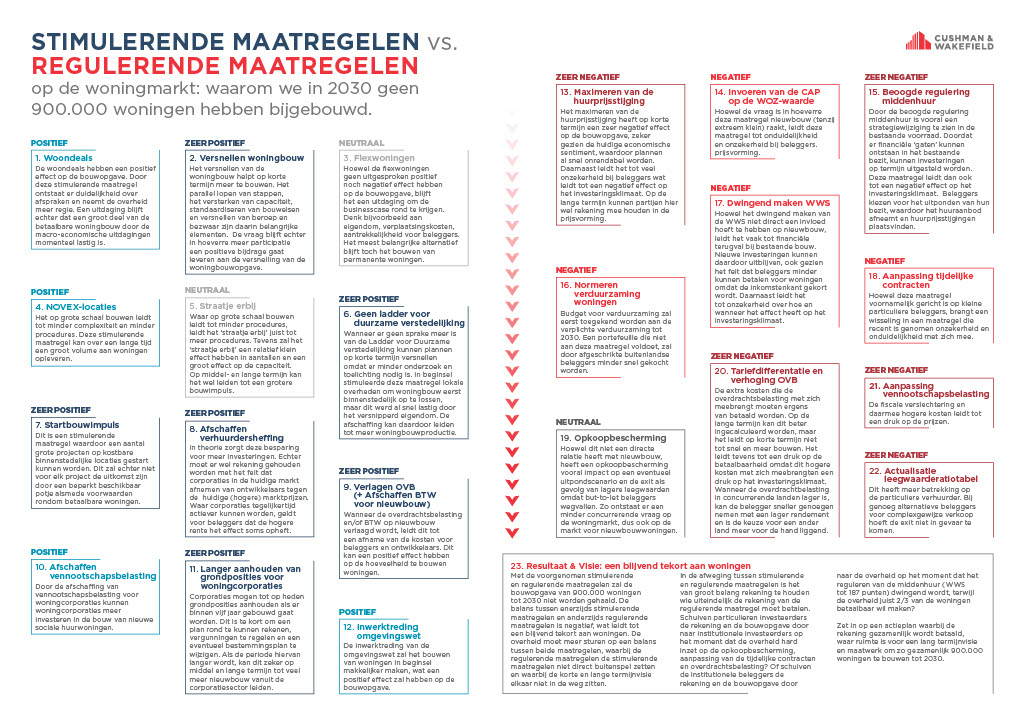AMSTERDAM, 14 december 2023 - A study of stimulus measures and regulations in the Dutch housing market by Cushman & Wakefield concludes that policy objectives will not be met with current laws and regulations.
Deficits in the housing market have risen sharply in recent years. Past backlogs are not being made up, while demand for all types of housing continues to grow. It is estimated that the current shortfall is just under 400,000 housing2, while another 500,000 are needed to have a total of 900,000 new housing by 2030, which would cover current and future shortfalls. That means we need to build around 150,000 houses a year over the next six years.
The outgoing Rutte IV cabinet, led by Minister De Jonge, has fully opened the toolbox of policy measures to both boost construction production, improve housing security and affordability of (rental) housing and make the current housing stock more sustainable. The result is a complex set of, on the one hand, stimulating measures to accelerate the construction task and, on the other hand, regulatory measures that will actually inhibit it.
Cushman & Wakefield notes that the restrictive measures have a heavier impact on the housing market than the stimulating measures, which means that the building task of 900,000 houses up to 2030 will not be met. The infographic below shows why.
Stimulus measures versus regulatory measures
2 https://primos.abfresearch.nl/dashboard/dashboard/woningtekort




